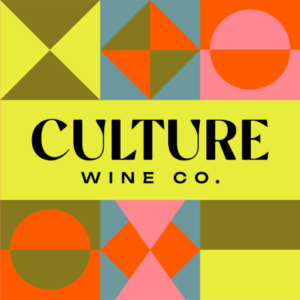Swartland
Swartland is unlike any other wine region in the world. Its unique energy results in a deeply passionate and unwavering group of winemakers who are often (and fairly) considered the modern revolutionaries of South African winemaking. Whether the producer is natural, organic, regenerative, or biodynamic, Swartland is a region with endless amounts of outstanding wine to explore.
With its vast expanse of golden wheat fields, long dusty roads, and heritage bush vines, Swartland is one of the world’s most unique wine regions. Located just an hour’s drive from Cape Town, Swartland provides an immersive and almost otherworldly escape from the city’s hustle and bustle. “Drive to the middle of nowhere, then take a right,” were the directions received from a producer prior to our first meeting. Despite the initially comical nature, the directions to Swartland took on surprising clarity upon arrival and revealed the region as a serene, untamed, and breathtakingly beautiful destination.
There’s an energy in Swartland that sparks an innate exploratory nature in a way few places on earth can do. Perhaps that’s why this part of South Africa has seen, quite possibly, the greatest and most profound wine revolution in the 21st century of any wine producing region in the world.
Winemaking has existed here for centuries; but the modern era of Swartland winemaking begins with Charles Back. Prior to his entry into the region, the most prominent producer was The Swartland Co-operative. Co-ops exist in every wine producing region on the planet and are a great way for small growers to earn income without needing to learn how to make wine or invest into owning winemaking facilities. As a result, Co-ops generally produce the majority of a region’s wines, but rarely its best quality.
One can imagine then, the surprise by Back when he tasted a wine that was so great, he became compelled not just by the wine, but the entire vineyard from which it came. This inspiring wine was a Sauvignon Blanc from a single vineyard, The Amos Block, and at the time it was owned by The Swartland Co-op.
This was back in 1995 – just a year after Apartheid ended – and South Africa was just starting to see decades of international trade embargoes lifted. There was hardly a guaranteed market for this wine, although there was finally a runway forming. Unafraid to embrace risk, Back was too charmed by this wine to simply move on. So, he went all-in, and that day asked to purchase the farm. A handshake agreement was formed, and the beginning of Swartland’s evolution into one of the most exciting and dynamic in the southern hemisphere was started.
The farm, known as Klein Amoskuil, was subsequently replanted, except for The Amos Block, which turned out to be the oldest in South Africa (nice find, Charles!) After the replanting, Back officially launched Spice Route Winery and hired a talented young winemaker, Eben Sadie. This hire would prove genius as Sadie would later emerge as the central figure in the quality revolution away from co-ops and towards a proliferation of small independent producer of the Swartland region. The full story of Charles Back and Klein Amoskuil is here.
Back’s foray into Swartland opened the eyes of the world to its supreme quality potential, bringing in new producers, with fresh ideas, and forever changing its spirit. Today, Swartland is THE hot bed of organic, regenerative, biodynamic, and natural farming and winemaking techniques in South Africa
As a result of these forward-thinking winemakers, South Africa saw a boom in the launch of new labels such as, Sadie Family Wines, AA Badenhorst, Mullineux, Porseleinberg, David & Nadia and Donavan Rall. These producers are the best in the country today and helped shed away the dreaded ‘cheap and cheerful’ label South African wine had previously been known for. Today, Swartland is THE hot bed of organic, regenerative, biodynamic, & natural farming and winemaking techniques in South Africa. There’s even an amphora producer here in Klein Amoskuil.
Back and Sadie’s work also opened the door for the Swartland Independent Producers (SIP) organization to launch and thrive. This collective of like-minded winemakers is committed to sustainable viticulture, minimal intervention winemaking, and showcasing the unique characteristics of the Swartland terroir. In essence, SIP has played a crucial role in promoting the region’s unique identity. Their dedication to sustainable practices has also helped foster a deep sense of community and innovation within Swartland’s wine industry.
Swartland producers never struggle to achieve ripeness given the hot and arid climate; yet alcohol is consistently moderated to remarkably low levels. Imagine drinking a wine that has intense flavor, concentrated aromas, and refreshing, zippy acidity with just ~12% alcohol. It’s all you can ask for in a bottle of wine!
A secret weapon for these iconic producers is their access to a bounty of heritage stock planted in shale, schist, or iron soils. In fact, Swartland is home to the second most Old Vines Certified bush vines in South Africa (2,000 acres). Somehow, these vineyards have stood the test of time and lived through not just the scorching African heat, but horrid political regimes and a wine industry previously run by a low-quality-producing monopoly for decades. Of today’s Swartland vineyards, you’ll mostly find Chenin Blanc, Marsanne, Roussanne, Colombar and Viognier for whites; along with Pinotage, Syrah, Grenache, and Cinsault for reds.
Truly, Swartland is unlike any other wine region in the world. Its unique energy results in a deeply passionate and unwavering group of winemakers who are often (and fairly) considered the modern revolutionaries of South African winemaking. Whether the producer is natural, organic, regenerative, or biodynamic, Swartland is a region with endless amounts of outstanding wine to explore.



